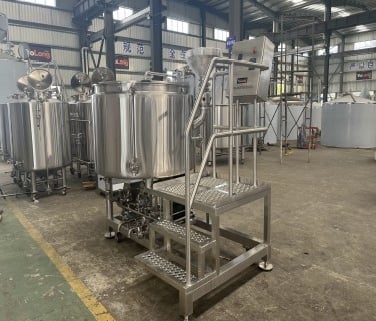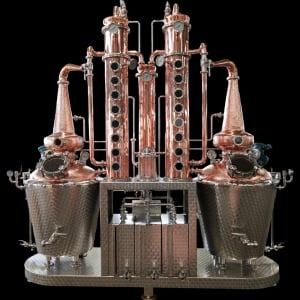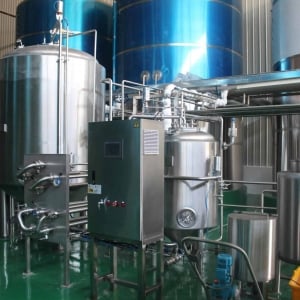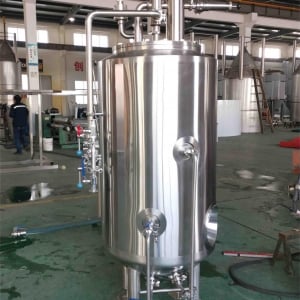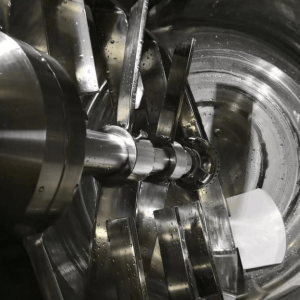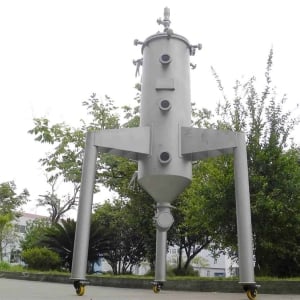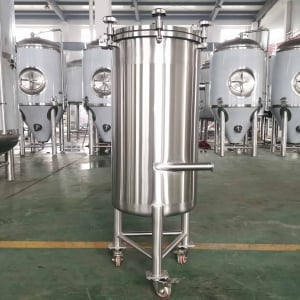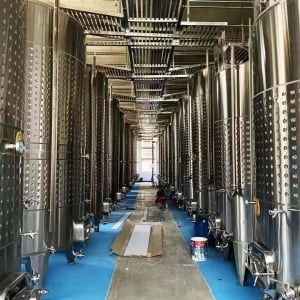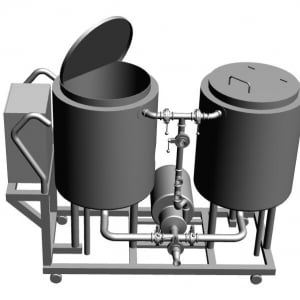the best stainless steel fermenter
The gleaming vessels that cradle your wort, transforming it into the magical elixir we call beer. For homebrewers, these fermenters are the workhorses of the operation, silently (well, maybe with a satisfying gurgle or two) orchestrating the alchemy of yeast and sugar. But with a vast array of options on the market, choosing the best stainless steel fermenter can feel overwhelming. Fear not, intrepid brewer! This comprehensive guide will equip you with the knowledge to select the perfect vessel for your brewing adventures.
Navigating the Stainless Steel Fermenter Landscape
Stainless steel fermenters reign supreme in the homebrewing world for a reason. They’re durable, easy to clean, and, unlike plastic, they won’t harbor pesky flavors or odors that can taint your brews. But within the stainless steel realm, a universe of fermenter features beckons. Let’s delve into the key factors to consider:
Features of Best Stainless Steel Fermenters
| Feature | Description | Importance |
|---|---|---|
| Capacity | The volume of wort the fermenter can hold. | Crucial! Consider your typical batch size and potential for scaling up. |
| Design | Cylindrical or conical? Conical fermenters aid in yeast collection and easier transfer of clear beer. | Cylindrical are simpler and cheaper, conical offer superior clarity. |
| Pressure Rating | For advanced techniques like carbonation within the fermenter. | Not essential for beginners, but a plus for experimentation. |
| Accessories | Thermowells, racking arms, spigots, and lids. | These can streamline your brewing process and improve sanitation. |
| Finish | Mirror polish or brushed finish | Personal preference! Mirror finish offers a sleek look, brushed can hide minor scratches better. |

Capacity:
This is your starting point. Most homebrew recipes fall within the 5-gallon range, so a 6-gallon or 7-gallon fermenter provides wiggle room for headspace during fermentation. If you envision brewing larger batches, look for 8-gallon or 10-gallon options. Remember, a fermenter that’s too big for your batch size can lead to challenges with temperature control and proper CO2 pressure.
Design: Cylindrical vs. Conical
The age-old question! Cylindrical fermenters are the classic choice, offering a simple, affordable design. They’re perfectly functional for brewing delicious beer. However, conical fermenters boast a sloped bottom that concentrates yeast sediment in a cone-shaped collection point. This makes it easier to siphon off clear beer without disturbing the yeast and leaves less sediment to be trub (yeast and hop particles) to contend with when bottling or kegging.
Pressure Rating:
For most homebrewers, a non-pressure-rated fermenter is just fine. However, if you’re interested in techniques like carbing your beer directly in the fermenter (bottling and kegging are more common methods), you’ll need a fermenter rated to withstand the pressure.
Accessories:
These handy add-ons can significantly enhance your brewing experience. Thermowells allow for accurate temperature monitoring and control, crucial for optimal fermentation. Racking arms, with attached spigots, simplify transferring clear beer from the fermenter without disturbing the sediment. Upgradable lids with blow-off posts and airlocks are essential for controlling pressure and preventing contamination during fermentation.
Finish:
This is purely a matter of aesthetics. Mirror-polished fermenters gleam beautifully, reflecting the light and showcasing your creation. Brushed finishes hide minor scratches better and offer a more industrial look. Choose the finish that best suits your style and budget.
A Table of Stainless Steel Fermenter Options
Now that you’re armed with the key features, let’s explore some popular stainless steel fermenters across various capacities and designs:
Popular Stainless Steel Fermenters
| Capacity | Design | Pressure Rating | Brand | Notable Features | Price Range (USD) |
|---|---|---|---|---|---|
| 7.5 gallons | Cylindrical | Non-pressure rated | SS Brewing Technologies Brew Bucket | Mirror finish, integrated racking arm, includes blow-off post and airlock | $150-$200 |
| 7 gallons | Conical | Non-pressure rated | Anvil Stainless Steel Bucket Fermenter | Conical design for easy yeast collection, rotating racking arm, ball valve spigot | $170-$200 |
| 7.5 gallons | Conical | Pressure rated to 2.4 psi | Spike Brewing CF5 Conical Fermenter | Double-walled insulation for temperature control, tri-clamp bottom port for easy |
Unveiling the Best Stainless Steel Fermenter: Your Guide to Brewing Nirvana
Ah, stainless steel fermenters. The gleaming vessels that cradle your wort, transforming it into the magical elixir we call beer. For homebrewers, these fermenters are the workhorses of the operation, silently (well, maybe with a satisfying gurgle or two) orchestrating the alchemy of yeast and sugar. But with a vast array of options on the market, choosing the “best” stainless steel fermenter can feel overwhelming. Fear not, intrepid brewer! This comprehensive guide will equip you with the knowledge to select the perfect vessel for your brewing adventures.
Navigating the Stainless Steel Fermenter Landscape
Stainless steel fermenters reign supreme in the homebrewing world for a reason. They’re durable, easy to clean, and, unlike plastic, they won’t harbor pesky flavors or odors that can taint your brews. But within the stainless steel realm, a universe of fermenter features beckons. Let’s delve into the key factors to consider:
Features of Best Stainless Steel Fermenters
| Feature | Description | Importance |
|---|---|---|
| Capacity | The volume of wort the fermenter can hold. | Crucial! Consider your typical batch size and potential for scaling up. |
| Design | Cylindrical or conical? Conical fermenters aid in yeast collection and easier transfer of clear beer. | Cylindrical are simpler and cheaper, conical offer superior clarity. |
| Pressure Rating | For advanced techniques like carbonation within the fermenter. | Not essential for beginners, but a plus for experimentation. |
| Accessories | Thermowells, racking arms, spigots, and lids. | These can streamline your brewing process and improve sanitation. |
| Finish | Mirror polish or brushed finish | Personal preference! Mirror finish offers a sleek look, brushed can hide minor scratches better. |
Capacity:
This is your starting point. Most homebrew recipes fall within the 5-gallon range, so a 6-gallon or 7-gallon fermenter provides wiggle room for headspace during fermentation. If you envision brewing larger batches, look for 8-gallon or 10-gallon options. Remember, a fermenter that’s too big for your batch size can lead to challenges with temperature control and proper CO2 pressure.
Design: Cylindrical vs. Conical
The age-old question! Cylindrical fermenters are the classic choice, offering a simple, affordable design. They’re perfectly functional for brewing delicious beer. However, conical fermenters boast a sloped bottom that concentrates yeast sediment in a cone-shaped collection point. This makes it easier to siphon off clear beer without disturbing the yeast and leaves less sediment to be trub (yeast and hop particles) to contend with when bottling or kegging.
Pressure Rating:
For most homebrewers, a non-pressure-rated fermenter is just fine. However, if you’re interested in techniques like carbing your beer directly in the fermenter (bottling and kegging are more common methods), you’ll need a fermenter rated to withstand the pressure.
Accessories:
These handy add-ons can significantly enhance your brewing experience. Thermowells allow for accurate temperature monitoring and control, crucial for optimal fermentation. Racking arms, with attached spigots, simplify transferring clear beer from the fermenter without disturbing the sediment. Upgradable lids with blow-off posts and airlocks are essential for controlling pressure and preventing contamination during fermentation.
Finish:
This is purely a matter of aesthetics. Mirror-polished fermenters gleam beautifully, reflecting the light and showcasing your creation. Brushed finishes hide minor scratches better and offer a more industrial look. Choose the finish that best suits your style and budget.
- Batch Size (continued): headspace for krausen (the foamy layer that forms during fermentation). A 6-gallon fermenter is perfect for most 5-gallon batches, allowing for some headspace.
- Brewing Style: Certain beer styles benefit from conical fermenters. If you frequently brew lagers, pilsners, or other styles that require exceptionally clear beer, a conical fermenter might be a worthwhile investment.
- Budget: Stainless steel fermenters range in price from around $100 to over $400. Determine your budget and prioritize features that are most important to you.
- Experience Level: For beginners, a basic cylindrical fermenter is a great starting point. As you gain experience and brewing aspirations evolve, you can invest in a conical fermenter or other advanced features.
- Space Constraints: Measure your brewing area and ensure the fermenter will fit comfortably. Consider height as well as footprint, especially if you have limited vertical space.
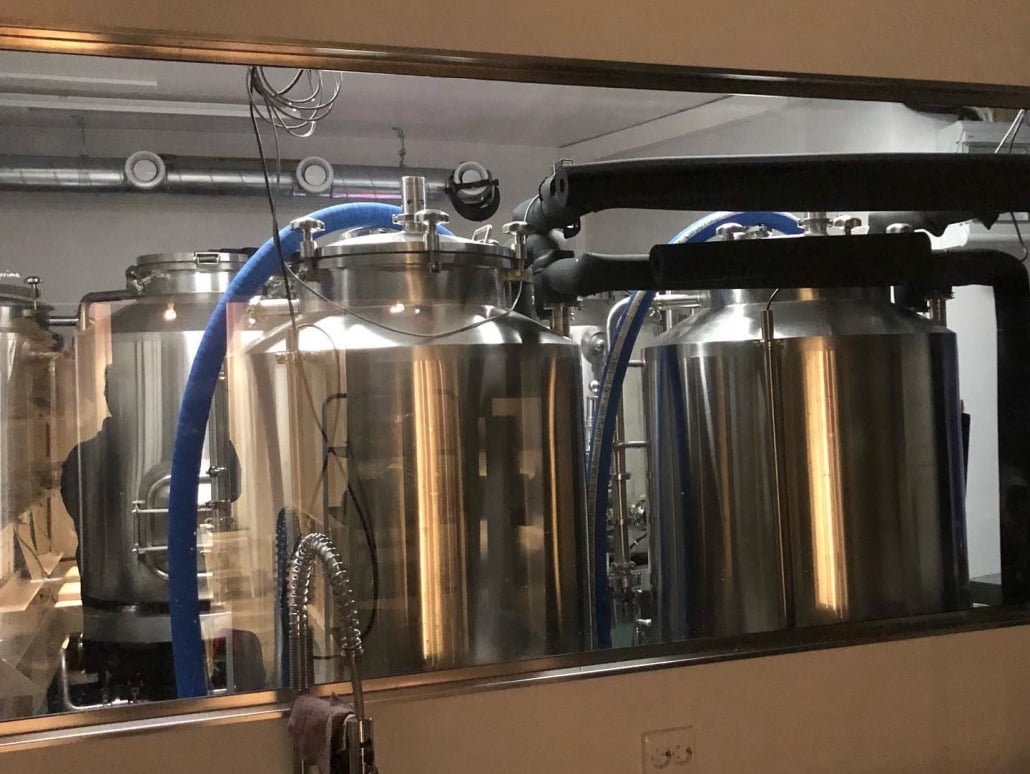
A Pros & Cons Comparison of Cylindrical vs. Conical Fermenters
Cylindrical vs. Conical Fermenters
| Feature | Cylindrical Fermenter | Conical Fermenter |
|---|---|---|
| Price | Generally less expensive | Typically more expensive |
| Design | Simpler design, easier to clean | More complex design, requires more cleaning attention to cone area |
| Yeast Collection | More challenging to collect sediment-free beer | Easier to harvest yeast and achieve clearer beer |
| Space Requirements | Smaller footprint possible | May require more vertical space due to cone |
| Versatility | Suitable for most beer styles | Ideal for lagers, pilsners, and other clarity-critical styles |
Ultimately, the choice between cylindrical and conical comes down to your brewing priorities and budget. Cylindrical fermenters are excellent all-rounders, while conical fermenters excel in producing crystal-clear beer.
FAQ
Here are some commonly asked questions to quench your thirst for knowledge:
Q: Do I need a pressure-rated fermenter?
A: For most homebrewers, a non-pressure-rated fermenter is sufficient. However, if you’re interested in techniques like carbonating directly in the fermenter, you’ll need a pressure-rated vessel.
Q: What are thermowells for?
A: Thermowells allow you to insert a thermometer probe into your fermenter without compromising the seal of the lid. This is crucial for monitoring and controlling fermentation temperature.
Q: How do I clean and sanitize my stainless steel fermenter?
A: After each use, thoroughly wash your fermenter with warm water and a gentle brewing cleanser. Rinse and sanitize using a no-rinse sanitizer designed for food-contact surfaces.
Q: My fermenter has a spigot. Can I use it to bottle my beer?
A: While you can use the spigot to transfer beer to a bottling bucket, it’s not ideal for filling individual bottles due to the risk of splashing and oxygen pickup. A bottling wand is a more precise tool for bottling.
Q: How long will my homebrew beer last?
A: Properly stored, homebrew beer can last for several months to a year. However, factors like style, storage temperature, and light exposure can affect shelf life.
With this comprehensive guide as your compass, you’re well on your way to selecting the perfect stainless steel fermenter for your homebrewing adventures. Remember, the most important factor is to choose a fermenter that aligns with your brewing needs and budget. Now, get out there, unleash your inner brewmaster, and start crafting some unforgettable beers!

